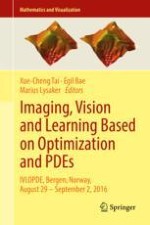This volume presents the peer-reviewed proceedings of the international conference Imaging, Vision and Learning Based on Optimization and PDEs (IVLOPDE), held in Bergen, Norway, in August/September 2016. The contributions cover state-of-the-art research on mathematical techniques for image processing, computer vision and machine learning based on optimization and partial differential equations (PDEs).
It has become an established paradigm to formulate problems within image processing and computer vision as PDEs, variational problems or finite dimensional optimization problems. This compact yet expressive framework makes it possible to incorporate a range of desired properties of the solutions and to design algorithms based on well-founded mathematical theory. A growing body of research has also approached more general problems within data analysis and machine learning from the same perspective, and demonstrated the advantages over earlier, more established algorithms.
This volume will appeal to all mathematicians and computer scientists interested in novel techniques and analytical results for optimization, variational models and PDEs, together with experimental results on applications ranging from early image formation to high-level image and data analysis.
